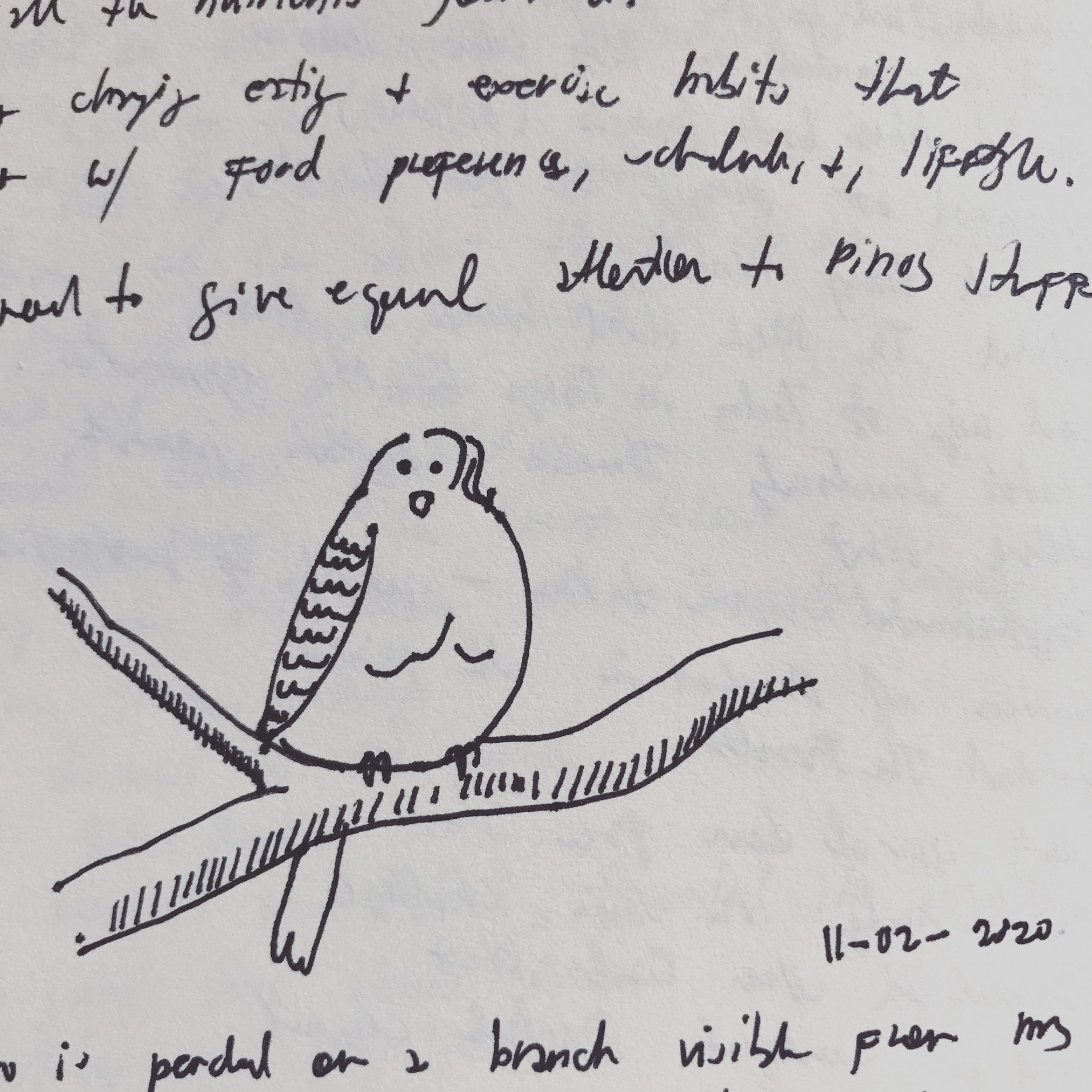
A bato bato (Zebra dove, Geopelia striata) is perched on a branch visible from my window. It is sitting contentedly, but when a strong wind shakes the tree, it looks a little concerned. It is easier to draw than the Yellow-vented Bulbul (Pycnonotus goiavier). It is much more stable. It only moves its head. Does it owe this lack of movement from a fairly large body? I remember Ricky Baker while looking at it. I’ve sen bato bato alone many times. Perhaps this one doesn’t have a mate. Perhaps bato bato love being alone.
The life of a bird is as interesting as its death. Last night, I saw a dead bird in the middle of the road. I saw its beak and realized that it was not one of the common birds, at least not one you’ll expect to see dead in the middle of the road. It looked like a sikling. Perhaps it was crossing the street the exact moment a car or a motorcycle or a tricycle passed by. There was blood. I picked it up and put it on the side of the road on top of the grass that was just wetted by the storm.
The large bird I saw the other day jumping on bamboo branches sounded like the same bird who made the sound that frightened my cousins in our trip to Sual a few years back. I heard them again when I passed by Sitio Daligan. I think there are a lot of them in that area. I haven’t heard them in our house’s surroundings in quite a while. I wonder if they are Bato-bato. I’ll search for a YouTube video or something that will teach how to identify Philippine birds by their sound.
The maya is the most dominant bird in Sta. Maria in terms of just their number. They are the most common bird around. I wonder if this is true in the entire lowland Philippines. They do seem to disappear in Baguio where crows are to be seen a lot. I wonder what the most common bird is in Baguio.